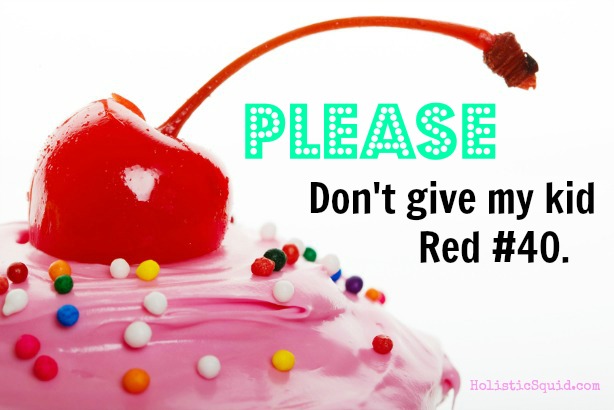
I am sure that many of you health-conscious, crunchy readers will find it odd that I am bothering to write a post about why food coloring is bad. But apparently, there are plenty of folks out there who haven't yet gotten the memo. Please pass this along to them. Thank you!
Last Friday when I picked up my son from kindergarten, he met me with red stained teeth and a red hand holding a plate with two neon red ladybug cupcakes from a classmate's birthday celebration.
I was naively shocked. Sugar is one thing, but red dye – really?
Surely every parent (at least the ones in our progressive part of Los Angeles) knows that food coloring is particularly HORRIBLE for kids. Or maybe not.
Here are two reasons why artificial food coloring is bad for your kids (and you too)…
#1 – Artificial food coloring is linked with hyperactivity, allergic reactions, and tumor growth.
Did you know that European lawmakers now require food with artificial colors to be labeled with a warning stating the food “may have an adverse effect on activity and attention in children”? This was in response to a recent large study linking food dyes and other preservatives to hyperactivity in children. (source)
Because of these measures, many European manufacturers are opting for more natural dyes over the chemical dyes, but here in the U.S. manufacturers are still dumping toxic colorings into processed food.
According to this article, “Fanta in the U.K., for instance, gets its color from pumpkin and carrot extracts. The U.S. version? Red 40 and Yellow 6 (a dye that causes mild to severe hypersensitivity reactions in some people). And a strawberry sundae from McDonald’s is solely strawberries in Britain, but here, petroleum-based Red 40 — which is the most-used dye — gives the sundae its hue. Kraft’s macaroni and cheese was recently under fire for using yellow dyes 5 and 6 in the U.S. version while the English version uses no dye.”
As a mom to a typical, active 6 year old boy, the last thing I want is to risk adding anything that might tip the hyperactivity scale.
In 2010, The Center for Science in the Public Interest (CSPI) published a detailed report of the link of artificial food dyes to hyperactivity, allergy, and cancer. According to the CSPI,the three most widely used dyes – Red 40, Yellow 5, and Yellow 6 – contain cancer-causing agents. Another artificial color, Red 3, is still in commercial use despite the fact that the FDA has identified it as a carcinogen. (source)
While studies and evidence can always be refuted, doesn't it make simple sense to skip the unnecessary artificial colors to avoid these risks?
#2 – Artificial coloring is, well, unnatural.
The human mind is designed to be drawn to colors that indicate probable nutritional content of food. Red peppers, orange egg yolks (from pasture raised hens), yellow butter (from grassfed cows), green spinach, blueberries, etc all beckon to be eaten.
As the FDA points out, “Color additives are now recognized as an important part of practically all processed foods we eat. Without color additives, colas wouldn't be brown, margarine wouldn't be yellow and mint ice cream wouldn't be green.” (source)
When food is artificially colored, the mind is tricked into thinking that otherwise unappealing items will be nourishing. Imagine what a party spread would look like if the Smurf cake, red punch, and doritos all wore their ‘natural' colors… A unappetizing, monochrome mess, no?
By feeding our children blue yogurt, neon green ‘vitamin' water, orange cheetos, and red ladybug cupcakes we are serving to confuse their instincts while inundating them with chemical bombs.
What some rainbow bright in your life? Go natural…
Natural dyes have been around for for thousands of years, and can add some extra festivity to food on special occasions without all the toxic confusion.
This article offers some great ways to create technicolor food using natural, non-toxic ingredients like these:
Red: Beets (juiced or powder) – learn how here
Orange: Carrots (juiced)
Yellow: Saffron or turmeric
Green: Spinach (juice or whole leaves) or liquid chorophyll
Blue: Red cabbage boiled plus baking soda – learn how here
Purple: Red cabbage boiled
When making natural food coloring, expect that you're not going to get the same freakishly saturated colors as you would from the artificial stuff.
For an extra dark color, you may want to start with a light, chocolate based cake or frosting.
If you're dying eggs for Easter, you'll need to soak the eggs much longer than with the store bought kits – see how here. But the payoff to your time and experimentation will be festively colorful food without a toxic overload.
Everyone should have the right to eat what they choose but… Do you think the FDA should mandate labeling food that contains artificial coloring and other known toxins?


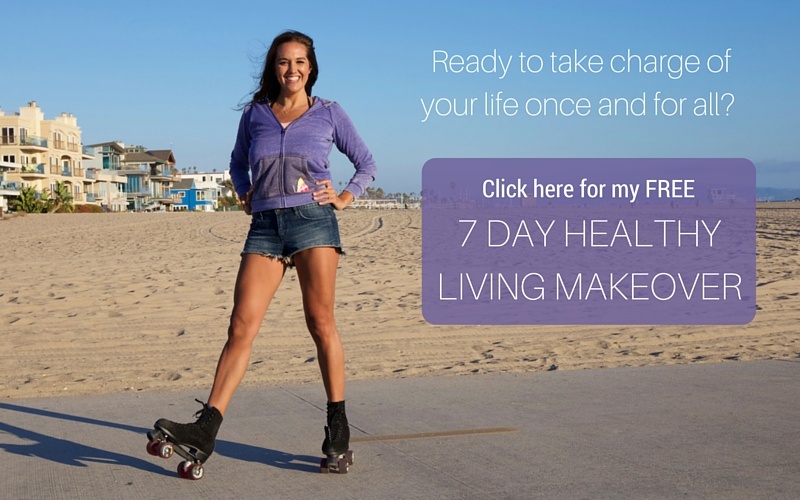
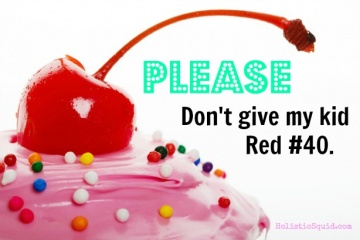


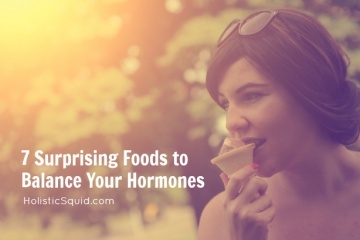
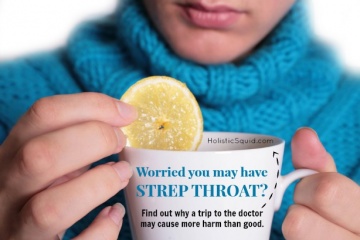
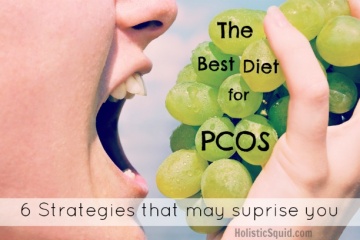
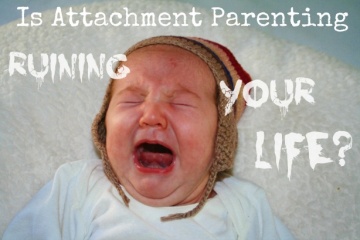
I occasionally bake cakes and have been using Wilton’s (artificial) food coloring gels for years. I’d like to stop using them, but am unsure about using natural ones because they might be too watery for my frosting recipes, including the marshmallow fondant that I make at least once a year (which is not natural either). You reminded me that I should look into natural food coloring gels (I know India Tree makes natural colors but I’ve read negative reviews their product). For now, I just try to keep the frosting white and use colors sparingly as accents. I do believe that food dyes in our everyday food are completely unnecessary and excessive. Go-gurts particularly scare me — people think they’re healthy but they’re just so wrong.
I like naturalcandystore.com. They have some fun baking decorations.
Hi Karen – I think experimentation with natural coloring would be well worth the effort!
I fell like it is bad if your constantly using food coloring but like if it’s like 1 time in like whole year then it’s fine because I have a YouTube channel and I’m doing a pancake art challange and I’m putting coloring in it now I’m going to use the type you use because you said you have been using it now for a while so I’m going to use it and that’s really the only time I will probably use it for my food because I don’t do colorful food but this is a challange and I’m adding color so it can be better not just be plain white but yeah if I use food coloring it’s only to make slime but only sometimes because I also put paint in my slime to put color so yeah but I was actually scared because I watched a challange and the kids said “this looks so good but we are not aloud to eat them because they have to much toxic” so thats why I got scared but yeah I’m going to use Wilton’s artificial food coloring!!! THIS INFO IS SO HELPFUL also if it’s so bad why don’t ban it because it’s called FOOD coloring like wth
I’m so used to thinking that bright colours equal unnatural food colouring, sometimes I get put off by the bright yellow fat in my homemade chicken stock (from our own freerange organic chickens), at first I think “ew food colouring” and then I remember that its the natural colour of the fat! I love growing lots of different coloured veges and having fun with making yellow tomato sauce and purple basil pesto 🙂 there’s lots of things you can do with natural food colours!
Thank you for your article! I wish all parents would read it and that all parents were as aware of the danger of artificial dyes, etc. We learned it long ago when our son was a preschooler and have avoided them ever since. Perhaps you already know of it, but for the benefit of your readers, I’d like to plus a support group that shows families how to avoid these dyes and how to buy foods free of them. We’ve benefited so much and want to share. It’s the Feingold Association. It was formed by parents and is run by parents of kids sensitive to dyes, etc. I hope you will check it out. The website is http://www.feingold.org
I have a kindergartener too and we do our best to eat natural/traditional here in our corner of LA.
Anyway, he brought home a green bagel from school for St Patty’s Day and while I normally toss food items given to him at school (usually candy believe it or not), he was very curious about this bagel. I decided to de-mystify this food and let him have a tiny taste. So I toasted a tiny piece, slathered it with raw butter and let him have his taste.
Uh, bad idea!! I can’t say that he was hyperactive, but he acted weird, (like another kid entered his body) for the rest of the day, and could not settle down to sleep. Silly me, I thought it was only a certain red dye that was on the no-no list, now I realize that all artificial food coloring are off-limits. We usually avoid commercial colored food anyway, but from now I will treat them like the toxic poison that they are!!
Isn’t it scary/weird/awful how these food-like substances have become so normal that many parents and even teachers think it okay to serve at school??!!
Did you know that the artificial dyes are derivatives of petroleum? So all dyes are bad but in addition to the dyes, artificial flavorings (such as vanillin) and the preservativaes BHA, BHT & TBHQ also come from petroleum! And often they aren’t listed on the label. No wonder there are behavior and learning problems.
Yep, food dyes are specifically from Coal Tar. yummy!!
Hi Abby – Thanks so much for sharing your story. That IS awful!
Food dyes are NASTY!!! I recently discovered just how much they impact my daughter. I wish I would have know about this sooner. I’m sharing your article. And I actually had published a similar one last week:
http://grandrapidsnaturalliving.com/save-the-color-for-the-eggs-your-kids-will-thank-you/
I wish the government would ban it. Or at least schools.
Super gross. Just another reason to eat REAL food.
I agree with everything you say, believe it and wish it wasn’t true. We have frank food discussions in my house, talk about chemicals in food and limit it as much as we can (buy organic fresh, removed boxed goods, am investing in a dehydrator and canning system ect). I am trying so hard but my eldest is almost 8, he goes to school, he has friends, we go to peoples houses and their kids are eating this stuff and I hate the look on his face when I say no or kids calling him a freak because he doesn’t eat that stuff. I give in and let him have it because I don’t want him to feel left out. I know the truths, he knows the truths but he is still only 8. Sitting alone eating a homemade organic brownie doesn’t cut it anymore while everyone else is diving into cupcakes with cool designs. It worked when he was little but it is not working anymore. I don’t want a home school lecture from people, we can’t do that. So besides putting him in a bubble, keeping him home under my wing, what the heck do I do??
Hi Stacy, You can do this. My son did not have things artificial dyes, etc and while I know, he had them now and then, he avoided them most all the time, still does. I didn’t give in because the days that followed were terrible for him – irritabiltiy, lack of focus, etc. and it sent a message that “sometimes” was okay. You’d be surprised how many kids avoid things with dyes. You don’t have to change the menus in your house or the brownies you make, just the ingredients. Things can be made (and bought) that look as junky as the other stuff – you just learn what to buy or make. Do check out the Feingold website. The Yahoo group is also informative: http://health.groups.yahoo.com/group/Feingold-Program4us/
Hi Stacy, this really is a great question for the Holistic Squid Facebook page. I’d love for the community to be able to answer you and for other moms to also see the answers given.
Excellent article Emily! I am sharing this like nobodies business. Yes, it is so frustrating to hear parents complain about their child’s behavior, health issues and doctor appointments as they feed them pre-packaged foods and snacks.
I see these toxic colors run rampant at child sports. Parents think gatorade is a healthy mineral sports drink and then when they bring in the snack for the team…almost all artificial foods with artificial colors and dyes. I cringe. I really think many parents just do not have this information.
Avoiding toxic colors and artificial ingredients goes for our beloved pets as well! You must not only read pet food labels, but know what to avoid and what you want included. We love them too!
Tip for those feeling frustrated: Make a list of your families favorite “junk” foods or favorite not-so-healthy meals and snacks and just re-make them, but with single ingredient items. They will taste soooo much better and your family with still get to eat all their favorites!
Thanks again!
It’s great that you’re spreading the word about the dangers of artificial dyes. That said, your message would probably be more well-received by those who haven’t “gotten the memo” if you lose the condescending tone in your writing.
Hi Lisa, thanks for your comment. I certainly didn’t mean to come off sounding condescending in any way. I was merely expressing shock that there food dyes are still used as a norm by many when it is so obviously bad for our children.
Thanks! My daughter is going to make her school science project about this.
Hi Stacey, thanks for the comment. That’s a great idea!
Stacy – You might like reading about a school science project done by a 6th grade boy that follows the Feingold Program!
http://www.feingold.org/taylorsmice.php
Thank you Markey for the great suggestion!
Thanks for this post. I’m aware of this but what I wonder (and this might be a dumb question..) is.. is it just as harmful for red dye to touch the skin as it is to ingest? Not that I’m planning an activity that includes dye on the hands.. the reason i ask is my daughter’s preschool tinted their water table red for valentines.. several of the kids came out with bright red hands and I wondered if the dye would have the same affect as if it was eaten?
Yes, the skin is the largest organ in the body and the red dye can be absorbed which can lead to reactions such as in behavior. Some moms use “Gloves in a Bottle” which is skin behavior.
It’s too bad the preschool was unaware.
When my daughter went to see her pediatrician, she was specially banned from red 40 as well 3 other as it was causing bowel obstructions from inhibiting the smooth muscle which in turned caused leaky gut syndrome. If you do not make it, then they should not eat it.
This post was such a great reminder. As a child I was very allergic to Yellow 5 — now I’m the director of a preschool and I only buy high quality foods, organic, low sugar, etc. For birthdays parents are not allowed to bring any food in – the classroom makes a plain yogurt cake and the kids love it. Yesterday one of the teachers was saying that she might use food coloring to dye the cake different colors so I will only let them use natural dye. Thank you again.
I’m curious as to how you knew they used artificial food colorings? Cochineal is probably the strongest red coloring available and is 100% natural! It definitely creates a bright red color, so you wouldn’t have been able to tell on sight. Many companies use it, even Starbucks did for awhile. I’m also curious why the GMOs that were most likely in the cupcake (and have been attributed to the same issues you mentioned) aren’t a concern at all?
I don’t mean to be rude, I just found your post confusing.
Lisa
Yes, I totally get that artificial food colors are not the most healthy choice. I’m not sure you understand the choice the kindergarten teacher made in handing out the cupcake to your child. I too am a kindergarten teacher. I teach in a school with a large percentage of sweet refugee students. A birthday celebration is a very special time in the classroom for each student. It is their day to shine! I applaud the teacher for making each child feel special on their day. Birthday cupcakes now have to be purchased from a bakery due to the amount of food allergies students have. They can not be homemade. If a student’s family is kind enough to send in cupcakes for the entire class to celebrate their child’s birthday then I will gladly help that student pass them out to their friends. If a parent does not want their child eating a store bought treat then I gladly keep frozen cupcakes that the parent has provided and will substitute the cupcake so everyone is still celebrating together.. Perhaps this could be an option for you.
I obviously do not know the teacher you are referring to, but I am very aware of the commitment teachers have to their students. I’m sure your teacher loved, taught, protected, nurtured and encouraged not only your child but 20+ other 5 and 6 year olds all year long. To complain that he or she chose to give your child a birthday cupcake to celebrate one of their friends makes me say, “Eek!” too!